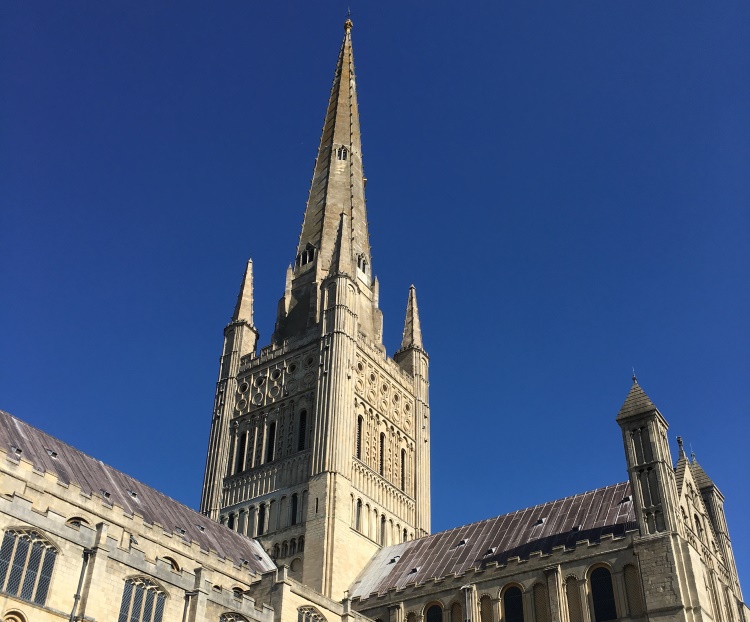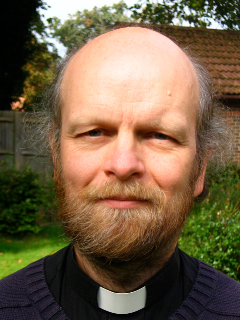Opinion Column

How important are our church buildings?
As some church buildings are starting to re-open for individual visits and private prayer, Andy Bryant reflects on the relevance of these places to our Christian faith.
When we were instructed (or was it just advised?) to close our church buildings, many were quick to remind us that the Church was the people not the buildings and that this was a wonderful opportunity for us all to explore new ways of being Church. It could even be a moment of liberation.
It is certainly true that in many places the maintenance and upkeep of buildings can be a burden and a significant drain on financial and time resources. With buildings closed, clergy have been released to serve their local communities and to connect online. The only thing that has surprised me about this is that people were surprised. In my experience clergy are in the main a very creative and imaginative bunch of people always exploring new ways of being Church. All they have been achieving has been wonderful but not a surprise.
It would be good to think that lockdown will have enabled us to re-set our relationship with our buildings, that they will no longer pre-occupy so much of our limited resources nor distract from a more people focused ministry.
Yet our church buildings aren’t not important. Not all our church buildings, and not in all locations, and not for all people, but for many our church buildings are of vital importance. The part that our buildings can and do play in our faith journey should be honoured, respected, and celebrated.
Yes, we can pray and offer worship any time, any place anywhere, yet we all have our thin places, those special places that help us feel close to God. At their best church buildings are designed to draw our hearts and minds away from ourselves, to point us towards the Other. They are soul spaces, full of history, associations, and memories. They are places where we feel safe, where we feel at home, where we feel close to God.
As people have started returning to their church buildings, their spiritual homes, it has been deeply moving to see how emotional they have been, often unable to speak. Others have told how during lockdown they would come to stand outside the building, even touching the door, to feel a sense of connection. Whilst we may wish to proclaim the whole world as sacred, people are still drawn to particular sacred places, places which have become a spiritual home. These become a vital part of our wellbeing.
Again, this will not apply to all church buildings, but many occupy a significant geographical location within their local community. They stand as a physical reminder of the presence of God at the heart of the community, and this holds significance well beyond those who might regularly attend.
Whilst halting public gatherings for worship, the closing of church buildings for all activity, meant these physical symbols of God’s presence fell silent at precisely the point when we most needed to speak of God’s presence at the heart of all things. We missed the opportunity to say to people, “when you look up and see the building, when you hear the bell being rung, remember we are praying for you” – even if it was a priest alone in the building. Yes, prayer was going on elsewhere but there is something powerful for people in being able to identify both the time and the place where it is happening.
Similarly, as the nation gathered for ClapforCarers, to hear even a tolling bell at each church would have been a way of saying that the Church is part of this; the Church praying for our NHS, our Care Staff, our Key Workers. When our buildings are shut, we become a little bit more invisible. The presence of our church buildings within our communities matters; they have the potential to enrich the life of each village, town or city.
So, worship moved online and into our homes. Comparisons were drawn with Christians gathering in their homes in the early Church, but the crucial difference was that these were diverse gatherings of people not just members of one household. Instead it felt that worship was moving into a private sphere, distorting something fundamental to our faith.
When it was announced that places of worship could re-open for individual prayer, one Iman was interviewed saying that this had less relevance for mosques where the emphasis was on corporate prayer, unlike Christians for whom prayer was individual. But nothing could be further from the truth. Christianity is a corporate faith, our primary act of worship is centred on a shared meal. Our family prayer begins “Our Father” and when we affirm our faith we say “We believe”. Our church buildings are important because they are a shared space, a place to gather with others to affirm a common belief, to acknowledge our place within the Body of Christ.
On Easter Day the Archbishop of Canterbury presided at his kitchen table. In contrast the Pope presided (almost) alone in St Peter’s in Rome. The former spoke of a faith domesticated and reduced by the pandemic. The latter proclaimed the profoundness of the mystery of the season, without shielding us from the pain of our separation one from another, symbolised by the empty building.
Perhaps for too long we have been over-focused on building maintenance and upkeep but that does not mean our buildings are not important. At their best they affirm the corporate nature of our faith, stand as witness to the life of faith at the heart of community, and plant a flag for our need of sacred space in our daily lives.
The Church is, indeed, the people but, rightly deployed, our church buildings can still be our allies in our mission and ministry.
Read the story on Network Norfolk about Rev Bryant preparing a special memorial in Norwich Cathedral to those who have died during the pandemic here.
The image of Norwich Cathedral is courtesy of Ruth Lilley.
 The Revd Andrew Bryant is the Canon for Mission and Pastoral Care at Norwich Cathedral. He was previously Team Rector of Portishead, Bristol, in the Diocese of Bath and Wells, and has served in parishes in the Guildford and Lichfield Dioceses, as well as working for twelve years with Kaleidoscope Theatre, a charity promoting integration through theatre for young adults with Down’s Syndrome.
The Revd Andrew Bryant is the Canon for Mission and Pastoral Care at Norwich Cathedral. He was previously Team Rector of Portishead, Bristol, in the Diocese of Bath and Wells, and has served in parishes in the Guildford and Lichfield Dioceses, as well as working for twelve years with Kaleidoscope Theatre, a charity promoting integration through theatre for young adults with Down’s Syndrome.
You can read Andrew's latest blog entry here and can follow him via his Twitter account @AndyBry3.
The views carried here are those of the author, not of Network Norwich and Norfolk, and are intended to stimulate constructive debate between website users.